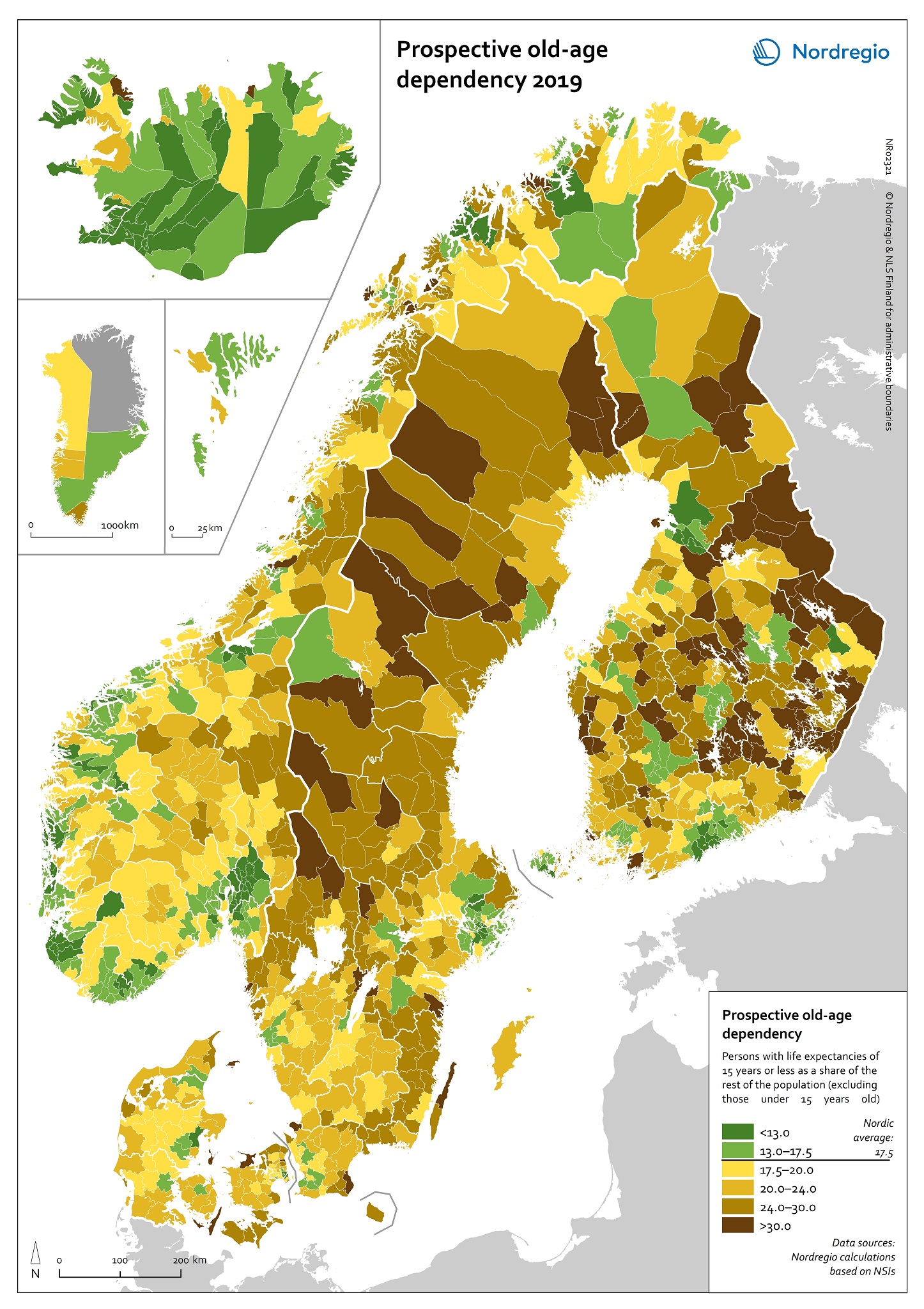This map shows the prospective old-age dependency ratio (POADR) in Nordic municipalities 2019
Population ageing has been one of the main demographic trends in the Nordic Region during recent decades. The process of population ageing can be understood as an upward shift in the population age structure. This means that there is a decline in the proportion of children and young people, along with an increase in the proportion of older age groups.
While conventional old-age dependency ratio measures population by a fixed age break of 65, the prospective old-age dependency ratio (POADR) is based on the notion that the need for care and associated costs for health and care systems generally increase steeply towards the end of peoples lives (e.g. Miller, 2001, Seshami and Gray, 2004), why the POADR indicator models the population in age groups who have a life expectancy of 15 years or less to the rest of the population of at least 15 years of age.
The darker brown municipalities in the map indicate a higher POADR while the green municipalities have the lowest levels observed. As shown in the map, internal differences in the countries shows that many rural and sparsely populated municipalities have a high ratio. Particularly in northern parts of Sweden and Finland.


